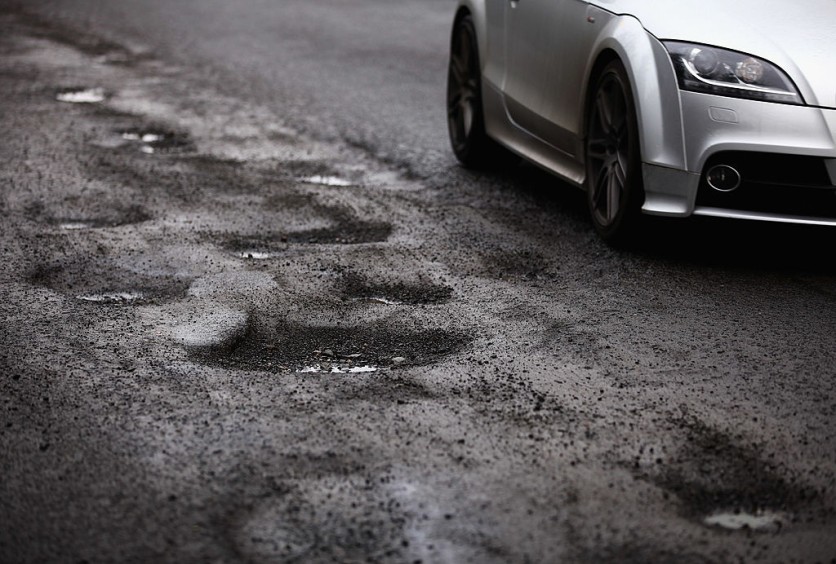The UK is set to witness the first trial of an autonomous pothole-preventing robot, ARRES Prevent, equipped with AI to detect and fill cracks independently.

GLASGOW, SCOTLAND - MARCH 04: A road user tries to avoid potholes on March 4, 2011 in Glasgow, Scotland. Councils across the UK are struggling to repair roads following damage caused by the coldest December since records began.
Witnessing First Trial of ARRES Prevent
ARRES Prevent is breaking out of the confines of the lab for its debut road test in Hertfordshire. This cutting-edge technology, a joint venture between tech firm Robotiz3d and University of Liverpool experts, marks a substantial leap in road maintenance.
Functioning as an Autonomous Road Repair System, ARRES Prevent utilizes AI to identify and analyze road cracks and potholes. Once detected, the robot autonomously addresses the issues by filling the cracks, preventing water ingress, and effectively halting pothole formation.
Interesting Engineering reported that the potential impact of this innovation is enormous, promising considerable time and cost savings while minimizing disruptions for road users.
Although currently in the pilot phase, the new vehicle has undergone rigorous laboratory testing. Its inaugural real-world road repair is slated for early this year on a residential street in Hertfordshire, marking a significant milestone in its deployment.
ARRES Prevent's Versatility, Efficiency
The team behind this groundbreaking technology believes it could revolutionize how Hertfordshire and other communities worldwide address challenges related to road surfaces in the future.
The concept has evolved over the past four years. In 2020, the university researchers launched Robotiz3d Ltd, a spinout company dedicated to advancing cutting-edge road maintenance technology.
By 2023, the company achieved a significant milestone with the development of ARESS Eye, a system designed to autonomously analyze and survey road surface conditions. This retrofit equipment can collect data while traveling at speeds up to 60 miles per hour.
The road maintenance vehicle scans one lane at a time, boasting a Field of View (FoV) that spans up to three meters. ARESS Eye stands out for its ability to provide detailed depth information and volumetric data, facilitating a comprehensive analysis of road defects.
As per BBC, this versatile system delivers highly accurate data on defect types and precise locations, empowering more efficient and effective road maintenance efforts.
Resembling a compact van, this battery-powered vehicle operates with versatility and efficiency, systematically recording repair details and precise locations to uphold stringent quality control measures in road maintenance.
This facilitates prompt decision-making and streamlined oversight of workflows. Potholes remain a substantial challenge for UK drivers, leading to vehicle damages and considerable financial burdens on councils.
Also Read : Breathing Traffic-Related Air Linked to Sudden Spike in Blood Pressure That Lasts 24 Hours
The estimated annual cost of pothole-related issues for UK drivers is around $2.2 billion. Despite ongoing efforts to repair nearly two million potholes each year, the persistence of new ones continues to overwhelm traditional manual repair methods.
The company asserts that its technology has the potential to deliver an impressive 90 percent reduction in costs compared to conventional road maintenance approaches, coupled with a remarkable 70 percent increase in repair speed.
Furthermore, Construction Kenya reported that the innovative approach results in three times fewer CO2 emissions due to its streamlined processes and reliance on electric technologies, contributing to a reduced environmental footprint, as highlighted by Robotiz3d.

ⓒ 2025 TECHTIMES.com All rights reserved. Do not reproduce without permission.




